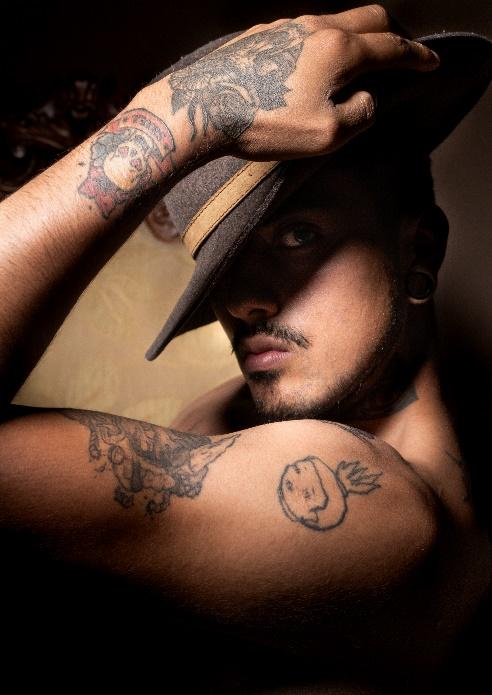Interview with Jaime Venegas, author of “Una Mirada”
Photography: Una mirada (2022)
Location: Ecuador- Ecuadorian Amazon– Shiguakucha
Jaime Venegas Gavilanes is an Ecuadorian photographer and filmmaker whose artistic journey began as a process of self-discovery. Since his first encounters with photography at the age of 15, he found in self-portraiture a way to explore himself and construct his visual identity. Over time, his perspective evolved into a documentary approach, where photography became a medium to connect with people, spaces, and life itself.
The photograph Una Mirada was taken in the Shiguakucha community, which has been affected by oil spills. Jaime traveled as a volunteer to engage with the community, raising awareness about the dangers of consuming water contaminated with oil. During the initiative, workshops on gardening were conducted, and rainwater filters were installed to provide the community with an alternative source of drinking water.
“The photograph Una Mirada emerged when I encountered a friendly child I had already met before because I taught him how to do handstands and flips, as I am fond of gymnastics. When we met again, he had his parrot on his shoulder, taking it everywhere. It was curious because, when I was photographing the parrot, the child’s eye appeared behind it, and I found it very beautiful how it seemed like they were becoming one. Later, upon deeper and more conceptual reflection, I realized that the image represents this vulnerable part of life: the child and the parrot facing the changes happening today together.”
Interest in environmental and indigenous topics through photography
“My mother always taught me to respect nature, animals, and to live more consciously, in a way that is less invasive and harmful to the environment. From that, I developed a vocation to better understand the environmental issues, what is happening in my country, in my hometown, Guaranda, and particularly in the Chimborazo paramo and the affected indigenous communities.”
“Indigenous communities have a different worldview and are organized in a completely different way. In these communities, the idea is that all beings are one. They view plants, animals, and people as part of the same whole.”
Photography and cinema as tools for transformation
“Artistic practice is a powerful tool for communication and creating much more intimate relationships with people. Beyond creating an audiovisual work, I feel it helps people not only to transform their relationships with others but also to undergo a personal transformation. It opens up a beautiful possibility for self-discovery. Furthermore, the environmental theme is fascinating because, since the beginnings of photography, it has allowed us to learn about realities we don’t have direct contact with and to understand the sensitivity of the person behind the camera. Understanding the process behind creating a photograph that goes beyond aesthetics, that has a deeper meaning, is something truly valuable.”

Jaime Aníbal Venegas Gavilanes is a prominent researcher, video artist, filmmaker, and Ecuadorian photographer with extensive experience in artistic projects addressing social and environmental issues, particularly in documentary photography and video. He holds a master’s degree in film from the Ibero-American University of Mexico, and his academic background includes studies at the Pontifical Javeriana University and the Higher Institute of Cinema and Acting (INCINE). Throughout his career, Jaime has received important awards, such as the FAO Mountain Day International Award (2020) and the David Ross Award (2024) in Mexico for his project Oppo ImagineIF. He also won first place in the Oficios de la Ciudad de Guaranda contest and received the Jury Prize in the Ibero Exchange program, in recognition of his work with communities in Colombia. Jaime has developed projects in several countries, such as Mexico and Colombia, with a recent focus on emblematic characters from Mexico City. In addition to his artistic work, he teaches film workshops at rehabilitation clinics, using cinema as a therapeutic tool for personal and social transformation.
